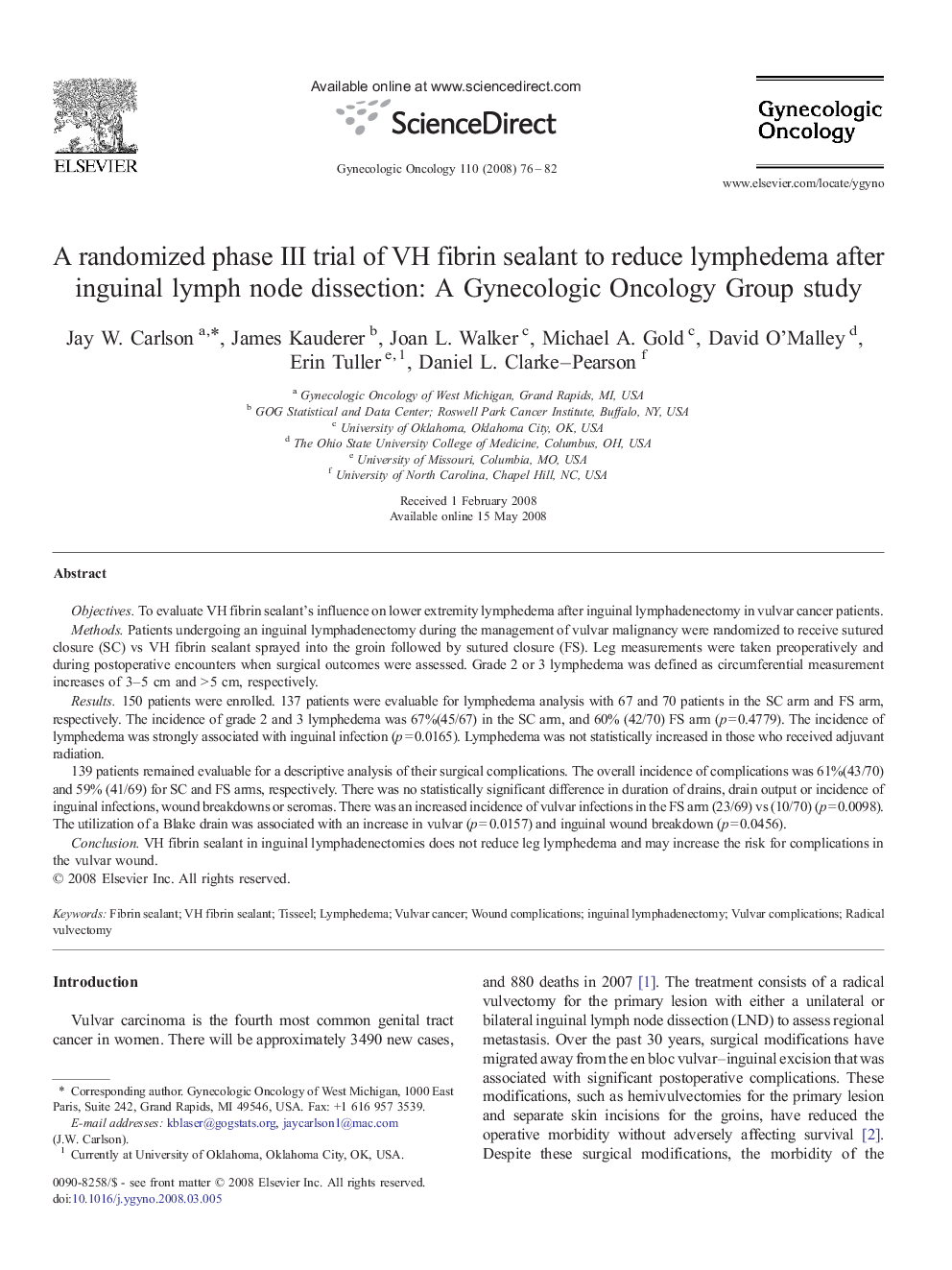| Article ID | Journal | Published Year | Pages | File Type |
|---|---|---|---|---|
| 3944648 | Gynecologic Oncology | 2008 | 7 Pages |
ObjectivesTo evaluate VH fibrin sealant's influence on lower extremity lymphedema after inguinal lymphadenectomy in vulvar cancer patients.MethodsPatients undergoing an inguinal lymphadenectomy during the management of vulvar malignancy were randomized to receive sutured closure (SC) vs VH fibrin sealant sprayed into the groin followed by sutured closure (FS). Leg measurements were taken preoperatively and during postoperative encounters when surgical outcomes were assessed. Grade 2 or 3 lymphedema was defined as circumferential measurement increases of 3–5 cm and > 5 cm, respectively.Results150 patients were enrolled. 137 patients were evaluable for lymphedema analysis with 67 and 70 patients in the SC arm and FS arm, respectively. The incidence of grade 2 and 3 lymphedema was 67%(45/67) in the SC arm, and 60% (42/70) FS arm (p = 0.4779). The incidence of lymphedema was strongly associated with inguinal infection (p = 0.0165). Lymphedema was not statistically increased in those who received adjuvant radiation.139 patients remained evaluable for a descriptive analysis of their surgical complications. The overall incidence of complications was 61%(43/70) and 59% (41/69) for SC and FS arms, respectively. There was no statistically significant difference in duration of drains, drain output or incidence of inguinal infections, wound breakdowns or seromas. There was an increased incidence of vulvar infections in the FS arm (23/69) vs (10/70) (p = 0.0098). The utilization of a Blake drain was associated with an increase in vulvar (p = 0.0157) and inguinal wound breakdown (p = 0.0456).ConclusionVH fibrin sealant in inguinal lymphadenectomies does not reduce leg lymphedema and may increase the risk for complications in the vulvar wound.
